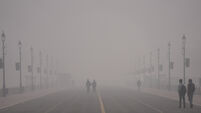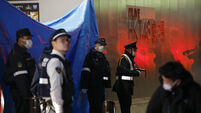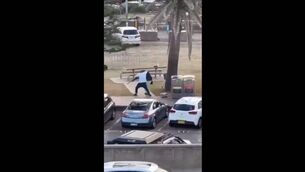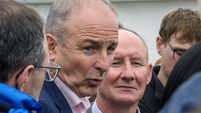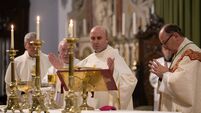Korean aid plea a sign of more openness?
Most observers doubt it signifies anything of major political or diplomatic import.
Reeling from the April 22 train disaster and suffering an acute food shortage, the North Korean government heads to Beijing on May 12 for working-level talks on ending its nuclear weapons programmes.
Some see its tentative openness in seeking disaster aid as a good omen; others say it just shows Pyongyang is desperate for help.
They note that Pyongyang immediately rejected doctors, nurses, medicine and reconstruction engineers from South Korea. Other South Korean aid had to be transported the long, slow way, by sea, and not over land.
Still, Anthony Bambury of the World Food Programme (WFP), who was among the few foreigners permitted to visit the site of the railway disaster, said he saw signs of limited openness that had often been regarded as unthinkable under the regime of President Kim Jong-il.
These signs included the freedom to walk around the disaster site unimpeded and to take photographs. In addition, he had access to hospitals where victims of the train blast were treated.
“We had access to walk around where we wanted to and take pictures,” Banbury told journalists this week at the Foreign Correspondents’ Club of Thailand.
“The director of the hospital offered to brief us. He let us see the conditions of the patients. This was a bit unusual, because we had complete access to the patients. The doctors said that 60% of the patients in one hospital were children.”
The photographs that accompanied Banbury’s account showed just how badly the children were hurt in the country’s worst train disaster. There were images of children with burned faces, bandaged eyes and heads wrapped in gauze.
Most of them came from two schools located near the point where the train explosion took place in the town of Ryongchon, near the border with China.
The two schools were damaged beyond repair, said the WFP official.
The initial reaction following the devastation was predictable. Pyongyang was tight-lipped. The local media hardly breathed a word for the first two days. Then, the North Korean regime took the unusual step of acknowledging that an accident had taken place and appealed for international assistance.
The local media also broke new ground by announcing the Ryongchon disaster, but with face-saving twists.
The state-run Korean Central News Agency, for instance, brought up the event by writing about the heroism of some women who sacrificed their lives when they tried to save portraits of Kim and his late father, Kim Il-sung.
But even this would not have happened a few years ago, when the government preferred to keep news of such disasters “more isolated”, said Banbury.
“They had no choice but to report the information because UN agencies were going back and forth from the site.” Such was not the case in 2000 when information about a train accident south of Pyongyang, which resulted in many deaths and injuries, was suppressed.
A similar cover-up took place in the early part of a more devastating crisis, the 1990s famine that, according to some estimates, killed between half a million and 3 million North Koreans.
According to Koreans based in Thailand, the assistance North Korea has received since it went public with the April disaster goes against the grain of self-reliance or juche that Pyongyang has always upheld as a state principle.
“Self-reliance has been important for national pride in North Korea,” Mira Kim, vice president of the Korean Association in Thailand, said.








